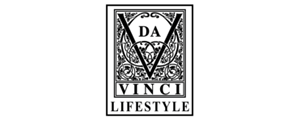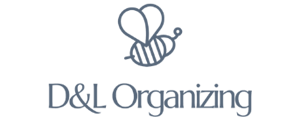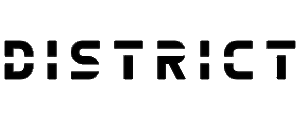With rapid development and digitalization, it has become essential for every business to have a website. However, the convenience of the online website comes with its share of risks like increasing the risk of cybercrime. The last thing a website owner wants is for their website to fall prey to cybercrime and lose critical data and consumers’ trust. But the good news is that you can protect your website from the most prevalent website security flaws by taking preventive measures. For that, you need to be aware of the major website security threats and vulnerabilities to ensure necessary safeguards.
This blog discusses the 10 common website security vulnerabilities that you should know to protect the safety and security of your website. Hiring reliable Web Development Services can help you avoid or fix these vulnerabilities in your website ensuring great security and user experience. So fasten your seat belts because you are about to go on a ride to ascertain and fix the bumps in your website.
Common Website Security Vulnerabilities That Need Your Attention
In this section, we’ll cover the major vulnerabilities that you need to keep in mind to keep your website secure and running smoothly.
SQL Injection
One of the most prevalent website security flaws is SQL Injection. It happens when hackers introduce harmful SQL code into a website’s input fields, such as login or search boxes. The website’s database then runs the code, enabling attackers to sneak around authentication and access private data.
SQL injection attacks can lead to severe consequences like data leakage and identity theft. As a website owner, you should employ parameterized SQL queries. This protects the user input and keeps hackers from inserting dangerous code. Web applications should also be kept up to date, and security updates should be applied as soon as they are made available.
Cross-Site Scripting (XSS)
Cross-Site Scripting, also known as XSS, is a vulnerability threat that occurs when hackers insert harmful scripts into the HTML code of a website. These scripts are then performed on the victim’s browser, giving the attackers access to user accounts or sensitive data.
There are varied ways an XSS attack can take place. Reflected XSS attack is when an attacker sends a malicious script in a URL. Another way is the Stored XSS attack in which the malicious script sent in the URL gets stored on the website’s server. It’s crucial to sanitize the user input and escape characters to stop attackers from injecting dangerous codes into your website.
Broken Authentication and Session Management
In this type of security breach, attackers target weak authentication systems and session management. This vulnerability arises when website users use weak or outdated authentication mechanisms or fail to properly manage user sessions. These flaws could give attackers access to user accounts, sensitive information, and other nefarious activities.
To avoid these issues, web developers can implement strong and safe authentication mechanisms, like multi-factor authentication. Make sure that the user sessions expire shortly to improve session security. Moreover, introduce strict password policies that require users to change their passwords regularly and choose strong passwords.
Broken Access Control
When web designers neglect to appropriately restrict access to particular portions of their websites, access control vulnerabilities are created. Attackers may leverage these flaws to change user data, obtain unauthorized access to confidential information, or carry out other nefarious deeds.
Website owners should implement role-based access control mechanisms that restrict user access to only the site’s portions they require to execute their jobs. Moreover, it’s crucial to examine access control procedures on a regular basis and to remove users’ access privileges who no longer require them.
Security Misconfiguration
Web application vulnerabilities like security misconfiguration surface when you fail to properly configure your web applications and servers. These flaws could provide attackers access without authorization, reveal confidential information, and enable them to engage in other destructive actions.
To avoid this risk, it’s crucial to adhere to the industry standards for security practices and web application and server configuration. This includes turning off unused services and ports, changing default passwords and account information, and routinely installing security patches and upgrades.
Insufficient Cryptography
Insufficient cryptography is a vulnerability that arises due to weak encryption algorithms or failure to manage cryptographic keys. Attackers may be able to access confidential data without authorization if your website shows this vulnerability.
If you don’t want to lose your data to such security breaches, then employ strong encryption algorithms like AES. Plus, make sure that the cryptographic keys are managed properly and stored securely. Website security testing can help you ascertain such vulnerabilities and you can improve them by upgrading your encryption policies.
Insecure Communication
When websites employ unencrypted communication routes, like HTTP rather than HTTPS, they result in insecure communication. Via these insecure channels, attackers can intercept and manipulate data, posing a risk for data theft, identity theft, and other security issues.
Website operators should utilize HTTPS to encrypt all data exchanged between the website and its users in order to prevent communication vulnerabilities. With end-to-end encryption provided by HTTPS, the data in transit is shielded against interception and tampering.
Insecure Password Storage
Using poor hashing methods that are simple for attackers to crack or storing user passwords in plain text are two examples of insecure password storage problems. These flaws could provide attackers access to user accounts and the ability to obtain user passwords.
Therefore, you must use strong and secure hashing algorithms like bcrypt or scrypt to avert insecure password storage vulnerabilities. Moreover, you can also enforce strict password policies.
File Inclusion Vulnerabilities
Web applications that don’t properly sanitize user input may include external files like scripts or templates, which can lead to file inclusion vulnerabilities. These deficiencies can be used by attackers to run harmful codes or get access to confidential data.
As web designers, you need to sanitize your user input and validate all file inclusion to ensure that they are safe and secure. Plus, make sure to keep your web application updated and promptly apply the security patches as they are released.
Cross-Site Request Forgery (CSRF)
Cross-site request forgery (CSRF) happens when attackers persuade users to act on a website without their knowledge or agreement. A few examples of CSRF are making illicit transactions, altering user settings, or deleting user data. This can be detrimental to the security of your user’s data.
Website owners should use anti-CSRF tokens that authenticate each request and stop attackers from faking requests to stop CSRF attacks. To further reduce the risk, it’s critical to install additional security measures like rate limitation and session timeouts. Plus, it’s crucial to educate users about the dangers of CSRF attacks.
The Bottom Line
In the blog above, we discussed the 10 common website security vulnerabilities that every website owner should know. We covered the issues and also talked about the reasons they occur in the first place. Moreover, we also provided you with the appropriate solutions to deal with them. We can understand that these issues are highly technical and it’s difficult for not techy people to grab them. But fret not, if you are not familiar with these vulnerabilities, you can always hire web development services to secure your site.






















































